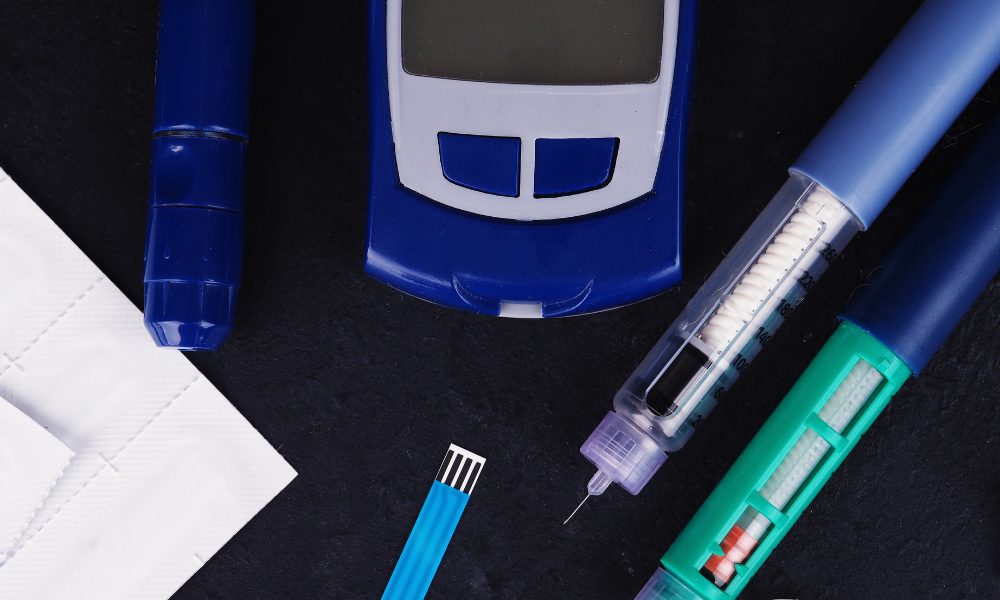If you have diabetes, keeping a check on your blood sugar level is vital to manage and prevent complications. It is easy to test your glucose level at home with the use of a glucometer. Read on to learn why it is important to check blood sugar level, when you should take a test, and how you can check glucose levels at home.
Monitor your Blood Sugar Level Easily

Why is it Important to Check Blood Sugar?
By tracking your blood sugar level, you get crucial information that helps to manage your diabetes well. Other benefits of monitoring blood sugar level include:
- Monitor the impact of diabetes medication on blood sugar levels
- Identify if the level of glucose in your body is high or low.
- Help in the formation of a healthy diet and exercise plan based on your blood sugar levels.
- Track the progress of the overall goals of the treatment for diabetes.
- Develop an understanding of other factors, including stress, illnesses due to diabetes, and the effect of high or low sugar levels on other body functions.
When to Check Blood Sugar Level?
Depending on your condition, a physician may advise how often you need to check your blood sugar levels . However, irrespective of the type of diabetes, it is recommended to check the blood sugar at least once a week. If there are fluctuations, it should be monitored thrice a week.
For Type 1 Diabetes
- Before Breakfast
- After Breakfast
- Before Lunch
- After Lunch
- Before Dinner
- After Dinner
- 3 am Blood Sugar Check
For Type 2 Diabetes
If you take an insulin injection to control your sugar levels , then you may need to take a test several times during the day. This also depends on the type and amount of insulin you are using. Usually, blood sugar testing is done before and after the meals, during bedtime, and before taking an insulin injection. If you use intermediate or long-acting insulin, then you can take the test before breakfast and dinner.
If you do not take insulin and manage the blood sugar levels with diet , exercise, and non-insulin medications, you are not required to test your glucose levels every day.
Understand your Target Range of Blood Sugar Level
Depending on several factors, your doctor may inform you about the target blood sugar results. A reasonable blood sugar range is calculated based on the following factors:
- Type of Diabetes
- The severity of the condition
- Age of the person
- How long a person has had diabetes
- Pregnancy status
- Overall health and other medical conditions, if any
- Presence of other complications owing to diabetes or otherwise
Recommended Blood Sugar Levels
Depending on your condition and the time you take the test, the blood sugar levels should be in the following range for an average person with no other complications:

It is essential to note that the range of blood sugar levels can certainly differ depending on the severity of the condition and other factors mentioned above.
How to Test your Blood Sugar Level at Home?

Blood sugar testing is done with the use of a glucometer at home. A glucometer helps measure your blood sugar levels by taking a small sample of blood on a strip from your fingertip. The glucometer gives an approximate measure of the concentration of glucose in the blood. Your doctor shall be able to suggest the device that works best. Here is how you can use a glucometer to check your blood sugar levels at home:
- Keep your hands and fingers dry before taking the blood sample for the strip.
- Insert the tester strip in the glucometer.
- Prick one of the fingertips with the needle. The needle is also called a lancet, and it comes along with the test kit.
- Bring the edge of the strip close to the fingertip to get a small blood sample for the test.
- The glucometer’s screen will display the blood sugar level on the screen within a few seconds.
Some glucometers also recommend taking blood from the forearm or the palm of your hand. However, for a more accurate reading, taking blood from the fingertip is better.
Other Methods to Check Blood Sugar Level
People with Type 1 Diabetes should keep a closer check on their blood sugar levels because their condition is more sensitive. So, they can choose to go for the Continuous Glucose Monitor (CGM) device. CGM allows you to measure your blood sugar level every few minutes using a sensor that is inserted under the skin and also reads interstitial fluids. The lifespan of the CGMS patch is 14 days. After this, it needs to be changed.

This device has an implanted sensor that can detect blood sugar level for up to three months. It also has a transmitter that sends the information from the sensor to a smartphone application wirelessly.
It is also recommended to take a blood sugar level analysis professionally once a month to get accurate results on your treatment’s progress. Also, note that the values derived from lab results should not be compared with that of the glucometer as it shows the capillary blood values. Diahome offers the facility of getting a complete blood sugar test without having to leave your home. They also have qualified diabetes educators to help with glucometer and CGM. Their experienced professionals collect your blood samples from your homes. You can schedule a visit with them via their smartphone application and get your blood sugar levels tested right away!
Authors:
Mrs.Sripriya Ravi, M.Sc, Senior Dietitian
Miss. Priyadharshini M.Sc, Dietitian